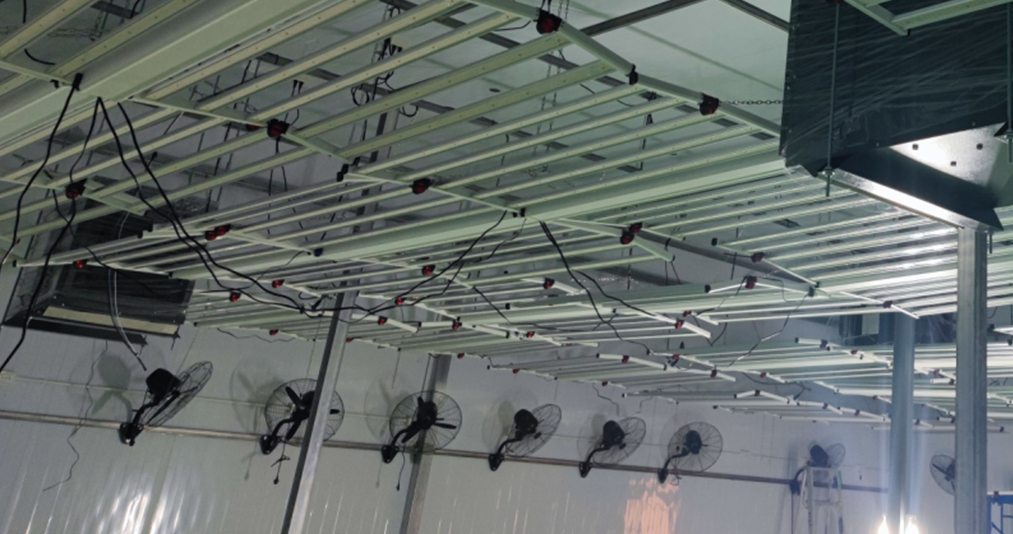Greenhouse Design: 3 Key Considerations for Cannabis Growers
2023-06-12
Building or retrofitting a greenhouse for cannabis cultivation provides tighter environmental control than an outdoor operation while maximizing the use of sunlight and other natural resources.
At Cannabis Conference 2022, experienced greenhouse growers shared insight into the intricacies of designing a structure that is highly efficient and keeps production costs low.
Here, Dr. Nadia Sabeh, president of Dr. Greenhouse; Salpy Boyajian, former executive vice president and board chair for Flower One and now president and chairman of Cana Nevada Corp.; Ivan Van Wingerden, owner of Pacific Stone; and Allen Hackett, co-founder of MD Numbers, elaborate on three important factors to consider when building or retrofitting a greenhouse for cannabis cultivation.
1. Location
The panelists said that often, location is the biggest decision when designing a greenhouse. The local climate, access to replacement greenhouse parts and the proximity to a grower’s target market all play a role in an operation’s success.
MD Numbers operates in Monterey County, Calif., which had a large—but declining—cut flower business and thus, a culture of agriculture and many vacant greenhouses available.
“We really searched for traditional agriculture places that had a multitude of things that could be successful for us, like labor [and] access to supplies like soil [and] any type of greenhouse materials that would be needed,” Hackett said. “If you’re on the side of a mountain somewhere and your greenhouse breaks down and it takes three hours to get a part delivered, it can really hinder your operation.”
The greenhouse that MD Numbers retrofitted hadn’t been used in roughly 20 years, making it a larger renovation project, but Hackett said the location was ideal based on its proximity to the company’s operations in San Francisco.
“Having the infrastructure around you, as well, is also really important,” Van Wingerden said, adding that by locating in an area with a robust greenhouse industry, replacement parts and maintenance are easier to come by.
Boyajian echoed this sentiment.
“The constant daily things that happen and break down in our greenhouses—it’s every day,” she said. “Being able to get things you need at the drop of a dime [is important] because that’s all downtime potentially. And if something goes off too long, now you’re dealing with a whole new set of issues.”
Hackett said it is also important to locate the cultivation operation in a municipality that is friendly toward cannabis and that has a reasonable tax rate.
“Look at the municipalities that you’re operating in,” he said. “What is the tax code there? I’m in a county that has a square footage tax, so regardless of what your yields are, you pay that tax.”
Other counties, he said, have taxes based on a percentage of a grower’s revenues, which may be cheaper than a square footage tax depending on the market conditions.
2. Supplemental Lighting
Sabeh, who moderated the panel, said that one of the main arguments for greenhouse cultivation is to save on power by relying on natural sunlight, but all three panelists said that they use supplemental lighting in their facilities to maintain consistent yield and quality throughout the year.
“For us, [we understand] that if we do add lights and we have that mixed light greenhouse that looks like indoor [cultivation], we can sell [product] for a little bit more,” Hackett said of MD Numbers’ approach to supplemental lighting. “Since we are vertically integrated, that was the key focus, is getting this product to the customers and getting the price points that really made the most sense. That’s what initially drove us to find a place that we could have lights and add lights to our facility.”
The MD Numbers team found that the environmental conditions in the greenhouse are vastly different in the summer versus the winter, and Hackett said supplemental lighting helps the company hit its cultivation goals all year long.
For Pacific Stone, Van Wingerden said that local restrictions on power usage pushed the company to use supplemental lighting only for its nursery and veg plants—but the supplemental lighting is necessary for more predictable product quality and yield.
“If you have four weeks of dark, rainy weather, plants can basically come out half the size compared to when it’s sunny,” Van Wingerden said. “It’s really an additional tool, but of course you’re not running it was much as you would in an indoor grow.”
Boyajian said that the Flower One team uses supplemental lighting for its nursery and veg plants, but also throughout the rest of the grow cycle, to keep the lighting at a stable level at all times.
Hackett acknowledged that one big drawback to supplemental lighting is the cost associated with bringing in the power required to run the lights. He said it is imperative for growers to determine when supplemental lighting is necessary, and to turn off the lights in the summertime and instead rely on the sun.
3. Heating and Cooling
Traditional agricultural practices for heating and cooling, such as using side windows for ventilation, typically work well for cannabis cultivation, the panelists said.
Hackett said the MD Numbers team tends to anticipate the day’s weather to determine how early they should open the facility’s windows, and the greenhouse also runs circular and exhaust fans when needed.
The key, Hackett said, is keeping the greenhouse cool enough to maintain optimal product quality, but also keeping it warm enough to stave off pests and disease.
“If we can get it cooler in the greenhouse at night, the plants just change into these beautiful colors, these purples and blues,” he said. “But that heat fights off our humidity and our mold. So, it’s a catch-22—you turn off the heat, you get good color, but then your mold and your pest pressure might actually go up, as well.”
Boyajian said Flower One has HVAC systems in place, but the cost associated with running them must be justified.
Along those lines, Hackett said evaporative cooling has been on his radar for a while, but the MD Numbers team has had a hard time justifying its often-steep price tag.
“I would love to have an evaporative wall,” he said. “It’s very expensive and hard to bring in, but it does wonders for a hot facility."







